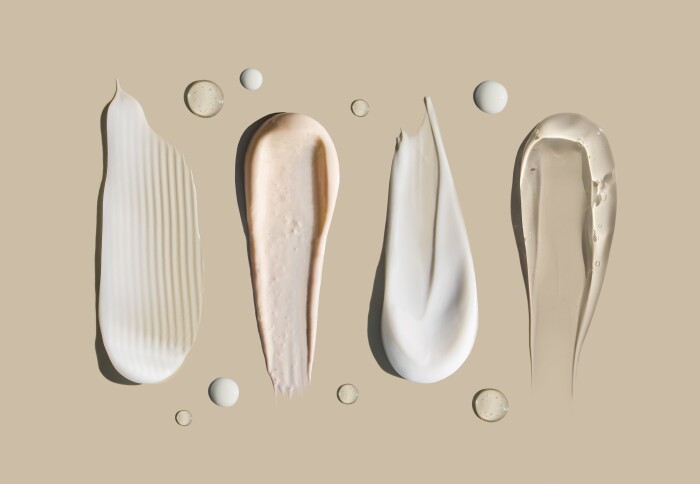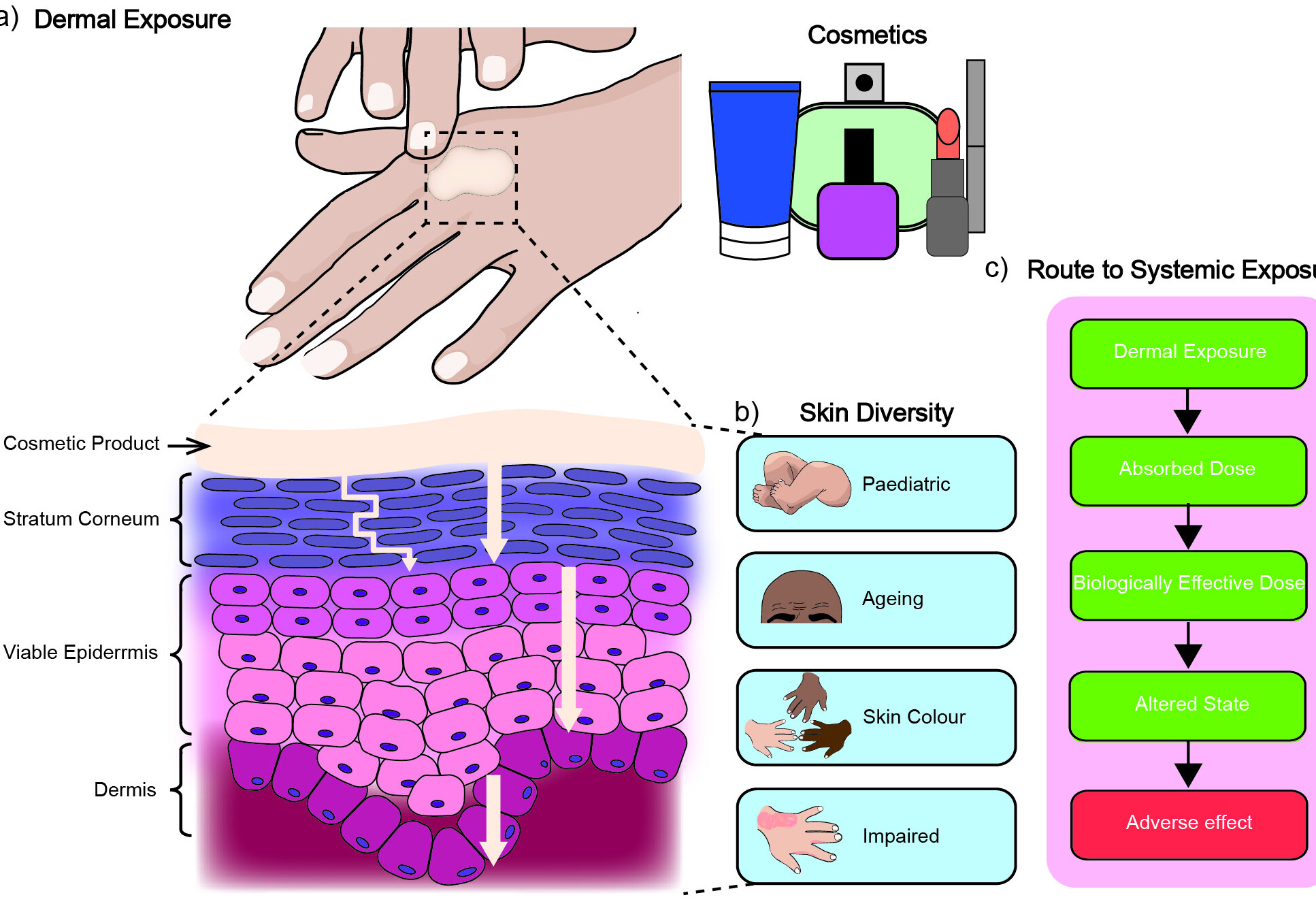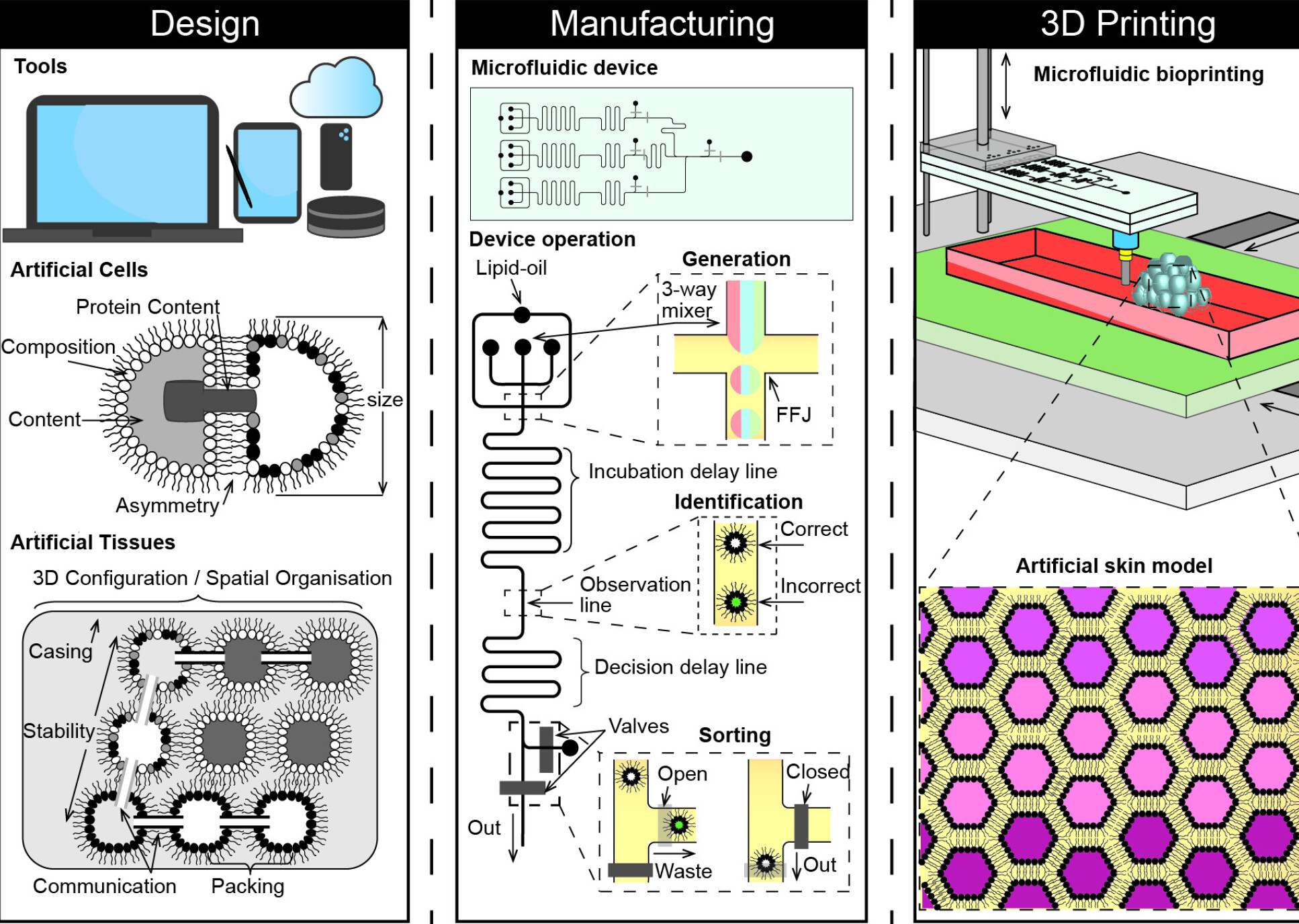

Imperial College London researchers speak to us about their work exploring animal-free methods for the future of testing cosmetics safety.
Testing cosmetics on live animals was outlawed by the EU in 2013, but animal tissues continue to be used to test for dermal absorption, a measure of how much a chemical permeates the skin to reach the bloodstream.
Alongside ethical considerations, there are also concerns about the reliability of animal tissues for predicting how chemicals will behave when exposed to human skin.
Imperial researchers hope to address this by replacing the use of animal tissues with artificial cells that can be 3D printed into life-like models of human skin.
In a new perspectives article, Dr Mark Friddin, a Research Fellow at Imperial’s Dyson School of Design Engineering, and Jessica Govey-Scotland, a former Imperial Institute for Molecular Science and Engineering MRes student, propose a digital manufacturing pipeline that connects the design, manufacturing and 3D printing of artificial cells into synthetic tissues. They hope that these synthetic tissues could be used to mimic human skin, reducing the need for animal tissue in cosmetics testing.
Communications intern, Aminul Schuster, spoke to them to find out more.
Q – Why are animal tissues used to test cosmetic products?
A – Jessica Govey-Scotland: The phasing out of live animal testing represented a shift towards more humane ways to test cosmetics. However, animal tissues are still used as a method to assess potential adverse effects in humans following exposure to cosmetics.
A – Dr Mark Friddin: Animal tissues remain in use because they are currently the most recognised way to predict the absorption of chemicals through human skin. There are no approved alternatives.
Q – What are the limitations of using animal tissues?
A – Jessica: To keep consumers safe it’s crucial to study how the skin absorbs chemicals when developing new cosmetics. However, animal skin is physiologically very different from human skin: it’s more permeable and is not good at replicating the metabolic profiles of human cells.
A – Mark: In addition, animal cells can’t account for factors such as age, ethnicity, or disease states. It is also ethically appropriate to work towards avoiding or replacing the use of animals in areas where they otherwise would have been used, in line with the 3Rs of animal research.

Dermal absorption. Credit: Dr Mark Friddin.
Q – How does your work address these issues?
A – Mark: Creating alternatives to animal skin means artificially reproducing the skin’s functions –from its role as a barrier to the way it interacts with the rest of the body. We identified core problems with replicating the skin’s barrier function and metabolism and, based on this, are exploring using artificial cell technologies as a more ethical, sustainable and reproducible alternative.
These artificial cells could completely remove the need for animal tissues and open the door to customisation, which could be used for engineering personalised skin models for individuals.
This in turn raises questions about how these assemblies could be designed and manufactured. To address this, we propose a digital manufacturing pipeline that links the design, manufacturing and 3D printing of artificial cells into synthetic tissues.
Q – What are some challenges with recreating human skin using artificial cells?
A – Mark: Designing artificial human cells is a significant challenge. There are biological, engineering, and design challenges to address.
From a biological perspective, the challenge lies in replicating how chemicals permeate the skin and interact with the metabolic profiles of human cells.
From a design engineering standpoint, the challenges relate to how we design, 3D print, and assemble artificial cells to create useable sections of synthetic skin. There is currently no well-defined pipeline that links these aspects, and traditional CAD approaches do not typically lend well to biological or chemical problems. This raises the question of how best to confront this design challenge and integrate it seamlessly with the manufacturing phase.
A – Jessica: Once we find ways to develop accurate synthetic human tissues, there will be challenges in validating and confirming their performance as an alternative to animal skin - methods that will need consensus from regulatory bodies, industry, and scientists. There will also be challenges in scaling up the fabrication and assembly technologies.

Q – Could you explain how you might engineer metabolism in artificial skin models?
A – Mark: The past few decades have brought significant advances in the capabilities of cell-free expression systems. These platforms allow users to produce proteins on demand by combining the relevant DNA or RNA template with all the necessary components to induce protein expression in a small test tube.
This approach has formed the basis of larger systems and circuits, which could be extended to replicate the specific features of human cellular metabolism. These features can then be incorporated into artificial cells.
Q – How could adopting these new methods be made easier?
A – Mark: We need to demonstrate that the new methods could be safer for consumers than current approaches, as safety is ultimately our shared goal. In this sense, collaborative approaches to help users validate their methods will help to foster innovation while reducing animal use.
A – Jessica: We should aim to integrate our approach into structured frameworks for safety testing, with specific skin models combined so that we can comprehensively test chemicals for their safety. Frameworks such as these can help increase the confidence of the data produced and will be required if we are to incorporate synthetic models into industry practice.
Furthermore, by basing artificial skin models on a mechanistic understanding of human biology, we can avoid using animal tissue and better predict the risk posed to human health with increased confidence.
Q – What motivated you both to explore artificial cell technologies as an alternative approach?
A – Jessica: My motivation stemmed from my interest in human biology and animal advocacy. I aimed to understand why there are no approved methods to assess the dermal absorption of cosmetics without relying on animal tissue or data. I wanted to address the availability of more human-relevant approaches.
A – Mark: The absence of an approved animal-free method for screening for dermal absorption is a long-standing problem that has persisted despite global efforts to develop alternative testing methods. The traditional top-down methods were not leading to alternatives, which inspired me to consider the radically different approach of using artificial cells, which can, in principle, be engineered to address these fundamental challenges.
Q – Looking ahead, what’s your outlook on how this field may evolve in the coming years? Where could it have the biggest impact?
A – Jessica: Artificial cell platforms could revolutionise cosmetics testing and positively impact other areas where animals are currently used. For example, pharmaceutical companies developing new drugs could use artificial cell platforms to test the efficacy of new medicines to reduce the number of animals used.
A – Mark: These technologies could pave the way for personalised, animal-free skin models for chemical exposure studies and improve the tools we have for creating safer formulations. Beyond cosmetics and drug development, the proposed platform could broadly impact sectors like food, agriculture, and materials engineering.
Achieving this vision involves overcoming significant technical challenges, aligning stakeholders, and validating safety. The potential is incredibly exciting.
Authors Information
Jessica Govey-Scotland is a former IMSE Molecular Science and Engineering MRes student who won the IMSE Prize for Excellence and the IMSE Prize for Best Flash Presentation.?She is currently a REACH Safety Associate at Reckitt, a global consumer brands company.
Dr Mark Friddin is an Imperial College Research Fellow, and co-lead of the Advanced Manufacturing Group at Imperial’s Dyson School of Design Engineering.
Article text (excluding photos or graphics) © Imperial College London.
Photos and graphics subject to third party copyright used with permission or © Imperial College London.
Reporter
Aminul Schuster
Communications Division




Leave a comment
Your comment may be published, displaying your name as you provide it, unless you request otherwise. Your contact details will never be published.